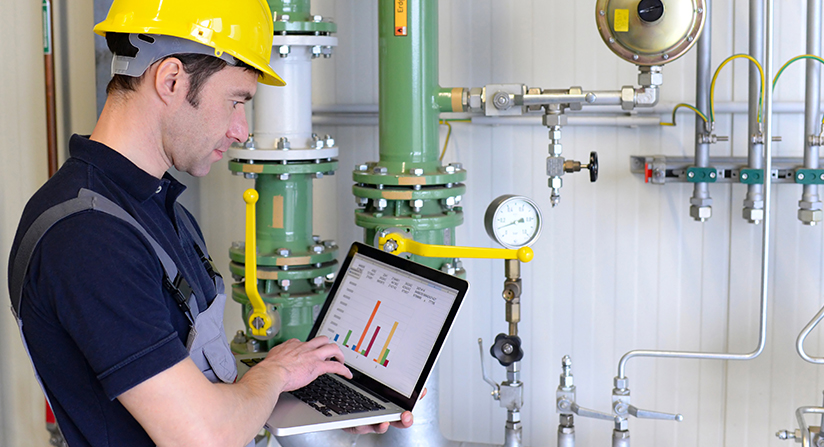Innovations have brought about some significant milestones to industries over the years. In 1765 the first industrial revolution began when the use of coal and steam engines became popular allowing for the transportation of goods using railroads. Mechanization also became widespread and the United States became more focused on manufacturing rather than agriculture.
In 1870 the second industrial revolution came about with the introduction of electricity, gas, and oil. Internal combustion engines were developed and widely used and big inventions were the telegraph, the telephone, the automobile, and the airplane. Steel and chemical synthesis were also a big part of this revolution.
The third industrial revolution started in the late 1950s and brought about nuclear energy, electronics, telecommunications, and computers. We also explored space, advanced research, and had great progress in biotechnology. Automation was a big part of this revolution with the introduction of robots and Programmable Logic Controllers (PLCs).
Industry 4.0 – the Fourth Industrial Revolution
The big advancement of the fourth industrial revolution is the Internet which has provided the IoT (Internet of Things) for interconnection of technology, real-time access to information, and cyber-physical systems which are mechanisms controlled by computer-based algorithms.
Industry 4.0 helps manufacturing organizations collaborate across departments, with vendors, and with partners in a more omnipresent and connected way. Using Industry 4.0 technology, businesses can work better, faster, and have access to lots more real-time data for greater insight into what is happening with the business, with customers, and with vendors.
How Industry 4.0 is Advancing Manufacturing
Industry 4.0 is digitally transforming manufacturers from the plant floor to the front office. These advancements allow companies to be more connected through integration, more intelligent with insight into data from across the company, and automation for faster and more accurate processes. Let’s take a look at the Industry 4.0 technologies that are contributing to the manufacturing business.
1. Internet of Things
Internet of Things (IoT) allows machinery, devices, robots, equipment, and products, through sensors and RFID tags, to provide information in real-time about their condition, performance, or location. This information is extremely helpful to control and maintain supply chains, prevent machine downtime, understand consumers’ needs, locate inventory, and produce products. The information provided through IoT also helps the plant floor and warehouses run smoother and employees to work smarter.
2. Big Data
Big data is information that is collected from all sorts of resources such as software applications, websites, computers, sensors, cameras, and more to provide actionable insights. This data is processed using machine learning with powerful algorithms to process the information and then provide it to users with data visualization tools like dashboards to make it comprehensible and useful.
Businesses can leverage big data to better understand what is happening with the supply chain, production, inventory, procurement, logistics, and more. Being able to gather more data and process it in a meaningful way is very useful to businesses so they can make smarter decisions and be proactive rather than reactive.
3. Cloud Computing
Cloud computing means the delivery of computing services over the Internet to offer faster innovation, flexible resources, and economies of scale. Cloud services are on-demand and paid for on a subscription basis. Cloud providers handle any maintenance so in-house resources are not needed lowering operating costs. Cloud computing is fundamental to Industry 4.0 as it can store and quickly process large amounts of data and it supports the most advanced technologies so businesses can more easily innovate.
4. Additive Manufacturing / 3D Printing
Additive manufacturing uses computer-aided design (CAD) software to direct 3D printers to create an object through layering in geometrical shapes. 3D printers were first used to create prototypes and now they have advanced to create tools, parts, and mass-customized products. Instead of having to store inventory, the 3D electronic file can be stored and used when more parts or products need to be produced reducing transportation costs and the inventory needing to be managed.
5. Advanced Robotics
Robots are becoming more useful and can perform technical and intricate tasks as well as more basic tasks to free up employees to perform other important work. In the warehouse, drones are used to scan inventory, and robots can pick inventory and package it. As technology advances, so do the capabilities of robots using modern software, AI, sensors, and machine vision.
6. Digital Twins
Digital twins are a virtual representation of either a product, machine, process, or system so that it can be used to analyze and improve upon. Businesses can use the digital twin to understand how to better produce a real-world object. These help engineers and operators recognize how products are performing now, as well as how they will perform in the future. The digital twin can help troubleshoot equipment that is at another location, optimize deployments for peak efficiency, and create what-if scenarios.
7. Augmented Reality
Augmented reality(AR) superimposes virtual images or data onto a physical object to provide important information to help with the task at hand. A real image could be captured on video, and that real-world image is augmented with layers of digital information. On the plant floor, workers could use AR to train new workers or help experienced staff to go through workflows, or it could show a technician how to repair a machine. A logistics worker could use AR to find exactly where products are, scan the products to disseminate the order, and then retrieve the product and deliver it to the proper location.
8. Cybersecurity
It’s important with Industry 4.0 to utilize good cybersecurity since greater connectivity and the use of big data can increase vulnerability. Manufacturers do not have a good track record for security and it is the second-most attacked industry. With Industry 4.0 there are more connected devices that provide a greater attack surface. Manufacturers need to use the best information technology and operational technology as an integrated defense strategy to protect digital assets and the physical infrastructure.
9. Horizontal and Vertical Integration
With Industry 4.0 businesses are connecting networks of cyber-physical systems (physical and computational components working together) and enterprise systems (large-scale software package) that provide automation, flexibility, and operational efficiency into production processes on the production floor, across multiple production facilities, and across the supply chain. Vertical integration in Industry 4.0 ties together all of the logical layers within an organization allowing data to flow up and down the layers so decisions can be data-driven. With these integration methods, businesses break down communication silos and everyone is working off of the same instant and accurate information.
Business Benefits of Industry 4.0
Industry 4.0 can transform manufacturing businesses with its technological innovations and increased utilization of data. The following is a breakdown of some of the extensive benefits achieved through new technologies and impacts of Industry 4.0 on businesses.
1. Major Improvement in Productivity
With the implementation of technologies from Industry 4.0, businesses use information from sensors and other digitally aware devices to identify process bottlenecks and increase the flexibility of production lines for mass customization. Machines can trigger demand signals and mobile robots can bring needed materials over to workstations. Defects can be noticed using artificial intelligence early in the production process to correct them before it becomes a bigger problem. All of these functionalities help to make production faster and more efficient.
2. Greater Agility to Be More Competitive
The many innovations of Industry 4.0 allow manufacturing businesses to streamline processes, provide mass customization, access business intelligence quickly – all of which can help businesses quickly pivot to adapt to market changes. By using innovation to optimize operations, you can more easily compete with the flexibility to go after new opportunities, handle increased demand, and improve customer satisfaction.
3. Improve Growth and Revenue
With Industry 4.0 technology, businesses can generate additional revenues by creating new products that have digital features to enhance their existing product mix. Digital services and total digital solutions will help to drive growth. And, with all of the additional analytics from Industry 4.0, it will become easier to personalize and customize products that will provide higher margins than those that are mass-produced. Using big data also provides increased insight into what are the most important areas of the business to focus on for the greatest impact on revenue. Better analytics allow managers to see areas where costs can be reduced and productivity can be improved to help revenue and growth.
4. Deepen Customer Relationships
Using Industry 4.0 technology companies can produce digital products and services, better meet delivery schedules, more easily create customized products, and provide better customer support, all of which helps to deepen customer relationships. Industry 4.0 provides increased information on what customers want so companies can better design products to meet those needs. Lower costs through greater automation and better visibility allow savings to be passed on to customers. And better management of the supply chain ensures less disruption of production for greater customer satisfaction.
Is Industry 4.0 Right for Your Business?
So how do you know if you should invest in Industry 4.0 technologies? It’s best to take a look at what problems you have in your company and determine if these innovations will help you to solve them. It’s also important to consider what you want to accomplish in the future and if your current systems can allow you to achieve those goals.
Manufacturers are increasingly adopting Industry 4.0 technologies which are accelerating globalization through worldwide supply chains and sensor networks. Manufacturing companies that adopt Industry 4.0 and increase their revenue using the technologies, will be able to use that money to invest in more innovations to further increase their competitive advantage.
Deciding to bring on Industry 4.0 technologies is something that must be carefully thought out. But keep in mind that it can help establish your company, your employees, your entire ecosystem of suppliers, partners, distributors, and customers as a fully interconnected, integrated digital network, linked to other networks around the world that can create greater opportunities.
The Hurdles to Overcome with Industry 4.0
As with any new undertaking, some challenges will need to be addressed. Below are some hurdles you may need to confront before implementing Industry 4.0 technologies.
1. Is Your IT Staff and Infrastructure Ready to Take on Industry 4.0?
Do you have a system in place that can support Industry 4.0 technology? If you already have an ERP system in place, it may be able to enable and connect to Industry 4.0, but is it agile enough to quickly adapt to industry changes, and do you have the IT staff that can retrofit your legacy system to support the technology and keep it working?
As mentioned earlier, cloud-based computing does not require IT staff to manage and it is set up to easily work with new technology. It is best to have a system in place that is flexible to meet changing business needs and that is designed to seamlessly integrate with modern technology.
2. Does Your Budget Allow for New Technology?
With Industry 4.0 technologies you’ll gain in many ways to include lowering costs and increasing production. However, implementing these technologies comes at a cost and you’ll need to determine if the ROI makes sense to move forward. Take a look at what you expect to achieve to determine if the investment makes sense.
Examine your immediate problems and their solutions. When figuring ROI look at hard and soft savings and focus on the time saved and redundancies that can be eliminated. Also, consider the benefits to your customers since keeping them happy will help your business and revenue growth.
3. Do You Have the Staff That Can Support Industry 4.0?
When implementing Industry 4.0, it is important to have staff that can successfully train and use the new technology. You will need people in place that will understand manufacturing processes and the digital tools that support those processes. You may need to hire some staff to fill gaps. If so, you’ll need to have people that have “digital dexterity” and have the knowledge and technical skills to operate the upgraded machinery.
4. Keeping Data and Equipment Secure
All of the connectivity from Industry 4.0 makes for an expanded attack surface. It will be important to anticipate the vulnerabilities and plan to combat them. Each piece of equipment could make the system subject to risk. It will be important to work with your solution provider(s) to help you scope out any vulnerabilities and ensure they are made secure.
How to Implement Industry 4.0
If you decide to move forward and incorporate Industry 4.0 technologies into your business it will be essential to create a well-designed strategy that is followed throughout the implementation. Below is a list of the steps that will help you to have a successful outcome and that have helped other companies reach their Industry 4.0 goals.
1. Create Your Strategy
Your first step is to identify all of your current technology systems and where improvement is needed. Create a strategy to help you define where you are now, where you want to be, and how you are going to get there. Get a strong commitment from the top executives and then work to get the same commitment from others in the organization. This is essential. Without complete buy-in to the change, you won’t have the support you need to succeed.
2. Begin Small and Work Your Way Up
If you can begin with smaller pilot projects rather than just going all out right from the start, you can slowly build momentum and gain buy-in from the organization. A good starting point could be to implement an MES (Manufacturing Execution System). Then you can work on a larger rollout. The early pilots should have a narrow scope but always work to have software and machines connected from the start of production to the customer delivery which is the idea behind Industry 4.0. Use these pilots to help overcome what you are lacking in both processes and infrastructure. Learn best practices from outside resources that have gone through this process or that have a good understanding of it to help move your digital transformation forward successfully.
3. Build On What You’ve Learned
Using the knowledge gained from your pilots will help you to determine how to proceed. Continue to develop your strategy to provide steps to incorporate resources you may have identified as needed to include a highly functional IT infrastructure, user-friendly interfaces, skilled employees, and good partners. What you’ve discovered may also help to identify the outside resources you need such as technology vendors or a skilled Industry 4.0 consultant.
4. Gain the Most from Your Data
One of the benefits of Industry 4.0 is all of the data you gain that can be used to better run your business. It’s important to find ways to acquire information from all parts of the organization and combine that data to provide useful insights that can help develop a competitive edge and attract new customers.
You will want to use analytics in creative and effective ways and have your data tied to your company’s strategic priorities. Setting your system up to get the most intelligence, will provide insight into such things as what products you should produce and how you can improve processes.
5. Foster a Digital Culture
For Industry 4.0 to work within your organization, you need to have everyone in the company ready to embrace a digital culture. It’s important for staff to recognize a digital transformation as something that will be positive for them and the company.
Changing the culture of an organization doesn’t happen overnight. It’s important to have organizational leaders believe in and communicate the value of the digital transformation to encourage others to embrace the change. Staff also need to accept that the company must continue to adopt new technologies to remain competitive and to grow.
6. Continue Being Innovative
Once you have your implementation complete, it will be important to fully use your new capabilities and continue to evaluate your gains. Use insights to develop products that customers want and keep working on new revenue resources. Expand your vendor resources to keep your supply chain optimized and consider partnering with other companies if you cannot develop a product on your own. Keep evaluating and improving upon your processes and keep your staff learning to work effectively.
Don’t look at the implementation of Industry 4.0 to be the end of the road. Technology will continue to innovate and so should your company. Remember to always keep your company’s and customers’ needs in focus and continually plan for the future.
What’s Next?
Well, Industry 5.0 and Web 3.0 is on the horizon and that means greater collaboration between humans and smart systems for faster and more accurate automation. Both robots and humans will be a big part of manufacturing in Industry 5.0, with the repetitive tasks going to the robots. This gives people more opportunities for greater responsibility in the workspace.
Going forward the desire for customized products will continue to increase providing jobs for skilled workers, and robots will help where automation is beneficial. Innovation isn’t something to be feared but embraced as we have seen over the past industrial revolutions, these technologies have enhanced our lives in many ways.
Follow Us





